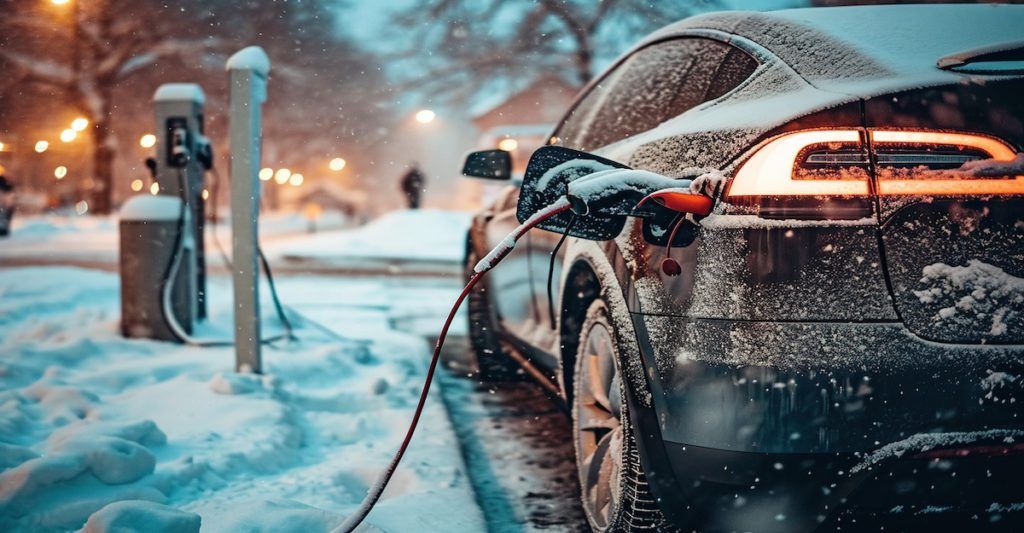
Advertiser Disclosure: At ElectricityRates.com, our number one goal is to help you make better energy decisions. We adhere to strict editorial guidelines, however this post may include references to products offered from our partners.
During the harsh grip of January’s nationwide cold snap, electric vehicle (EV) owners encountered a significant obstacle that added to the winter blues: battery charging issues.
As temperatures plummeted, many were faced with the stark realization that cold weather does not only affect the roads but also the efficiency and reliability of their electric vehicles.
This phenomenon brings to light the challenges and considerations of owning an EV in cold weather, touching on the effects of extreme temperatures on EVs, batteries, and chargers and offering insights into how owners can better prepare for winter’s icy embrace.
EV in Cold Weather – How Does it Impact Your Vehicle?
EV Range in Cold Weather
One of the most noticeable effects of cold weather on electric vehicles is the reduced range. Battery cells, the heart of an EV’s power system, are significantly less efficient in cold temperatures. Most EVs use lithium-ion batteries, which work most efficiently at temperatures between 50 and 110 Fahrenheit.
Their inefficiency in colder temperatures arises because the chemical reactions within the battery slow down, making it harder for the battery to deliver the same level of power as it would in warmer conditions. As a result, the range of EVs can decrease by up to 40% in cold weather, a phenomenon that can catch many owners off guard.
Battery and Charging Challenges
The battery is not the only component affected; the charging process itself can become slower and more cumbersome. In extreme cold, batteries must be heated to an optimal temperature before they can even begin charging. This preconditioning process consumes additional energy, further reducing the effective range of the vehicle.
Moreover, public charging stations can also experience difficulties in extreme weather, including slower charging speeds and, in some cases, complete outages, adding another layer of inconvenience for EV owners.
Preparing for the Cold
Despite these challenges, there are several steps EV owners can take to mitigate the impact of cold weather on their vehicles.
Precondition the Vehicle
Many EVs allow owners to precondition their vehicle while it’s still plugged in, which simply means warming up the battery to an optimal temperature before driving. This not only conserves battery range but also ensures the vehicle is warm and comfortable from the moment you start driving.
Optimize Charging Strategy
Charging your EV to full capacity in cold weather may take longer than usual. Planning your charging sessions in advance and allowing extra time for charging can help alleviate some of the stress associated with reduced charging speeds.
Use Economy Modes
Many electric vehicles offer economy or eco modes that optimize battery usage and conserve energy. Using these modes can help extend the range of your EV during cold spells.
Keep It Covered
Parking your EV in a garage or covered area can help protect it from the coldest temperatures, reducing the amount of energy needed to heat the battery and cabin.
Go Easy on the Heat
Conventional combustion engines produce much more wasted energy in the form of heat compared to EVs. However, in winter weather, that "wasted" energy turns into a boon as it can used to warm the cabin. EVs, on the other hand, will need to use much more of their batteries to heat the cabin during cold weather, thus reducing their driving range. If you're able to keep the car's thermostat at 70F, say, as opposed to 80F, that will boost your mileage per charge.
Regular Maintenance
Keeping your EV in top condition is crucial, especially in winter. Regular checks and maintenance ensure that your vehicle’s thermal management system, which keeps the battery at its ideal operating temperature, is functioning correctly.
Charging Ahead: Navigating Winter's Chill with Confidence
As electric vehicles continue to become a mainstay for personal transportation, understanding and adapting to the challenges posed by extreme weather conditions is essential for owners. By taking proactive steps to prepare your EV cold in weather, owners can enjoy the benefits of electric driving year-round despite the chill in the air. With advancements in technology and increased awareness of cold weather effects, the future of EVs in winter looks promising, paving the way for a smoother, more reliable electric driving experience, even in the face of Mother Nature’s coldest moods.
In addition to understanding how to navigate the challenges of winter weather, EV owners can benefit from a broader knowledge of the electric vehicle ecosystem. ElectricityRates.com offers a number of resources designed to enhance the EV ownership experience.
Whether you’re curious about how owning an EV will affect your electric bill, seeking tips on reducing that same bill, or exploring renewable energy options for charging your vehicle, ElectricityRates.com has you covered. These resources not only help owners make informed decisions but also contribute to more sustainable and efficient use of electric vehicles, ensuring that your journey into the world of EVs is as smooth and rewarding as possible.



